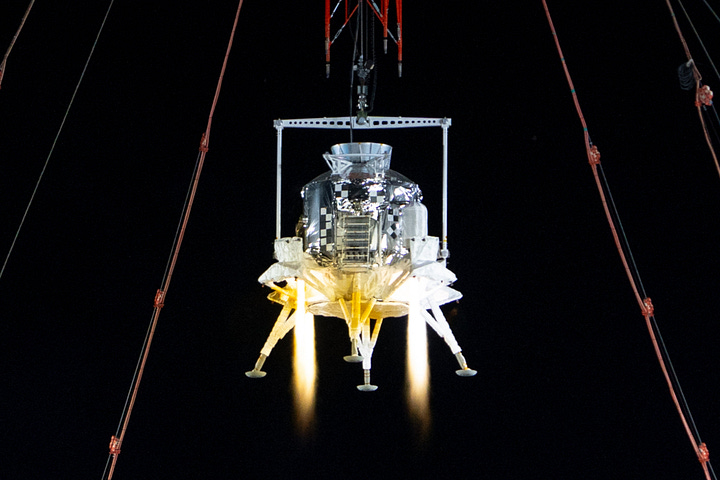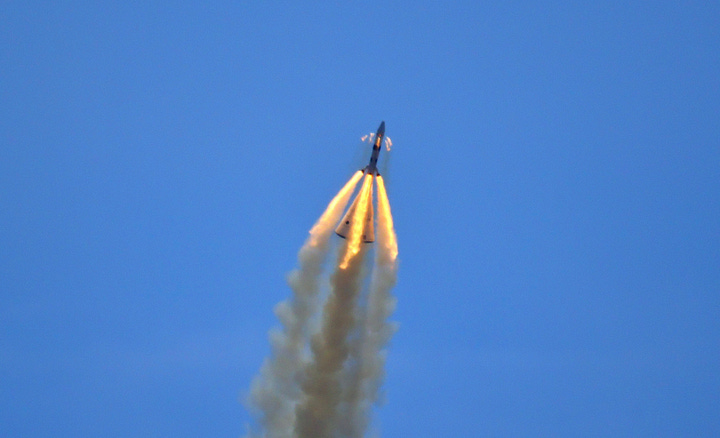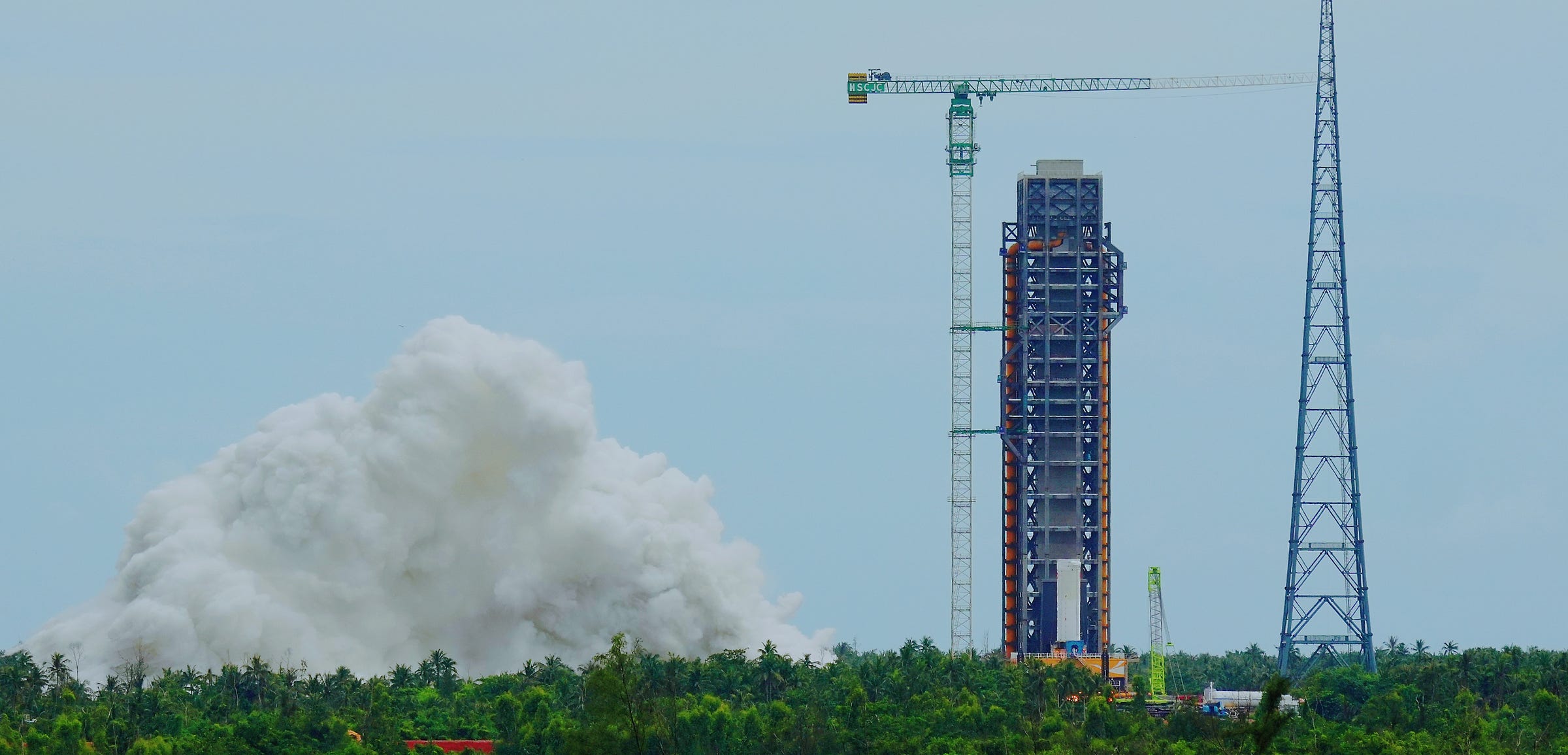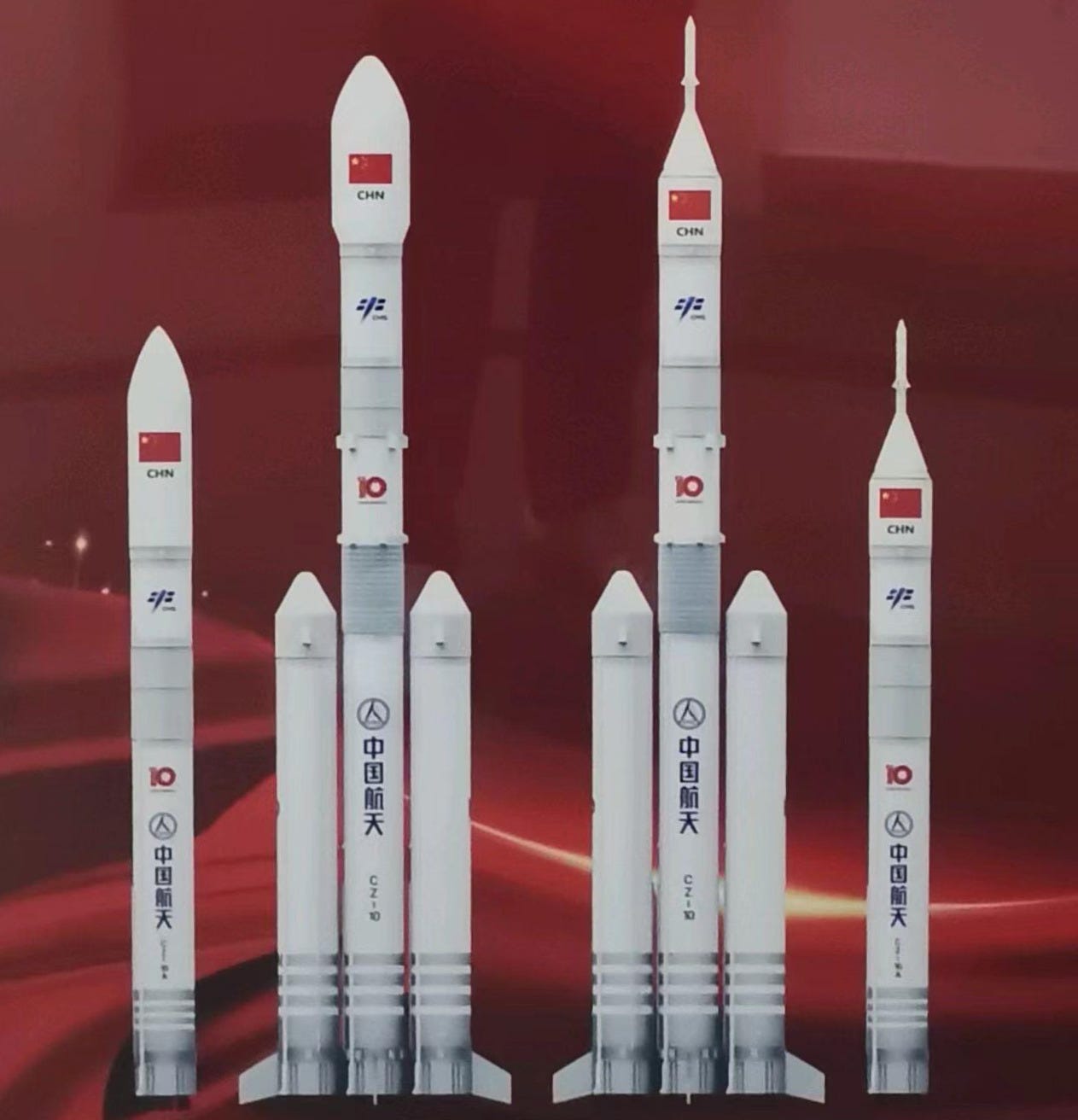Long March 10 Roars to Life in Wenchang!
The Moon comes ever closer.
The China Manned Space Agency, the China Academy of Launch Vehicle Technology, and other involved enterprises fired up a static fire test article of the Long March 10 series rocket a short time ago!
At 15:00 pm China Standard Time (07:00 am Universal Coordinated Time) on August 15th, seven YF-100K engines ignited on Launch Complex 301 at the Wenchang Space Launch Site. The seven engines fired for about thirty seconds, generating around 892 tons of thrust.
Not long after the Long March 10 series static fire test article fired up, the China Academy of Launch Vehicle Technology confirmed the success of the test. According to the academy, today’s test demonstrated and validated simultaneous ignition, control, and operation of all seven engines along with their propellant feed systems, ignition timing, and engine gimbal control mechanisms. Data regarding each of the systems and components is reportedly as expected within design specifications.
The China Manned Space Agency also hailed the static fire as a success, adding the following as well:
“The successful test laid an important technical foundation for the manned lunar exploration mission. In the future, the Long March 10 series of carrier rockets will be fully used in manned space engineering missions, together with the Mengzhou manned spacecraft, to realize the upgrading and development of [China’s] manned space-to-earth transportation system.”
“The mobile launch platform and drainage channels used in this test are the newly built supporting infrastructure for the implementation of manned lunar exploration missions at the Wenchang Space Launch Site in [China]. Construction is currently underway, with all work progressing smoothly. Construction of other supporting facilities and equipment at the launch site is also proceeding steadily.”
If there are any problems with this translation please reach out and correct me.
Launch Complex 301 was supposedly selected for this test as existing test stands can't accommodate the massive thrust loads expected. The choice of using the Long March 10 series’ launch pad also allows engineers to validate the rocket's systems in the actual launch environment where it will eventually fly from. Post-test inspection may also better inform final hardware installation choices (hopefully to prevent doors from blowing off).
Hardware for this test was first spotted on Launch Complex 301’s mobile launch platform a few weeks ago, around July 28th.
Future tests, like wet dress rehearsals and more static fires, of the Long March 10 series rockets may be with complete launch vehicles ahead of their debut flight.
Over a year ago in June 2024, three YF-100K’s were fired up on another Long March 10/10A test firing article. For that test, a total of 382 tons of thrust was generated, for 127 tons per engine, along with demonstrating stable synchronised startup and shutdown. During that test, engine gimballing was also demonstrated. It is believed that only three engines per booster will gimbal on the Long March 10 and 10A.
Between the recent test and the one last year, various ground tests of the Long March 10 and 10A could have been conducted, including a fairing separation test for Mengzhou missions, along with others prior to mid-July this year. Those tests could included loading propellant tanks with gaseous nitrogen to prove they can withstand cryogenic fuels temperatures, stressing tank walls to ensure they are structurally stable, and vibrating hardware that will be equipped inside or around propellant plumbing systems to monitor any possible leak locations.
China’s lunar mission hardware
With the static fire test, the Long March 10A is progressing steadily toward its debut mission in early 2026. The launch vehicle is planned to be 67 meters tall with a diameter of 5 meters, with a possible fairing diameter of up to 6.2 meters, which will see it weigh 740,000 kilograms while fully fuelled with rocket-grade kerosene and liquid oxygen. Powering the two-stages will be seven YF-100K’s on the first-stage to produce 892 tons, with a single YF-100M engine producing 149 tons of thrust for the second-stage.
Following its debut flight, the Long March 10A will likely support Earth orbit tests of Mengzhou, possibly including operations with the Tiangong Space Station.
Following the proving of the Long March 10A, the Long March 10 will head toward its debut flight in late 2026 or early 2027. The fully capable three-stage trio-core vehicle will stand at 93.2 meters tall, with all stages being 5 meters in diameter, and weigh up to 2,189,000 kilograms fully fuelled. At liftoff, twenty-one YF-100K’s generate a combined thrust of 2,676 tons of thrust, seven YF-100K’s on each first-stage booster producing 892 tons of thrust, burning rocket-grade kerosene and liquid oxygen. Later into flight, the second-stage will feature two YF-100M engines capable of producing 298 tons of thrust (from burning rocket-grade kerosene and liquid oxygen), followed by the third-stage using three YF-75E engines producing 28 tons of thrust, although using liquid hydrogen and liquid oxygen.
After the Long March 10 has debuted and its systems verified, taikonauts will be ready to head toward the Moon.
While neither the Long March 10A nor Long March 10 has flown yet, their engines have. Both rockets’ first-stage engines, the YF-100K, have powered successful flights with the Long March 12. Meanwhile, the Long March 10’s third-stage has had its engines, the YF-75DA, propelling various satellites into orbit via the Long March 8A.
However, the Long March 10 and 10A are just one part of getting to the Moon. A first glimpse of the near-finalized designs of the Mengzhou crew capsule and Lanyue lunar lander was shared back in November 2024. Progress on Lanyue has been mostly quiet due to the nature of the vehicle, needing to be understood in a smaller range of environments, but it was announced that the spacecraft completed ascent and descent tests on August 7th. Meanwhile, back on June 17th, Mengzhou conducted its zero-altitude launch escape test to demonstrate the vehicle’s ability to quickly and safely depart the launch site in the event of an emergency.


For surface operations, the Wangyu (望宇) lunar spacesuit and Tansuo (探索) rover are actively in development too. Not many details on Tansuo are known, other than it’s being tested with crew and that it will carry two taikonauts several kilometers. The Wangyu lunar spacesuit however was shown off in September 2024, with a demonstration of the suit’s movement via walking, crouching, kneeling, and climbing a ladder.

Although hardware is still under intensive development, China’s taikonauts have already begun training for lunar missions for months. Initial missions to the Moon are expected to have their crews consist of taikonauts who have spent several months in space. This training is said to involve landing procedures and activities for surface operations, including collecting samples and deploying experiments.
Wenchang’s Long March 10 infrastructure
Since around January of this year, Launch Complex 301 at Wenchang has quickly sprouted up, with work in 2024 at the site focused on clearing land for the flame trench as well as various propellant and consumable pipelines. The scale of work at the site was revealed in March, with much of the launch support tower’s base complete, a flame trench dug, and the first mobile launch platform for the launch pad being built. A few months later in May, the launch support tower reached its maximum height, with work almost near completion ahead of the static fire (work on the mobile launchers’ propellant and commodity tower is still needed).
Interestingly, Launch Complex 301’s launch tower may have two crew access arms, one for boarding Mengzhou atop of the Long March 10 and the other for the Long March 10A due to the almost thirty-meter height difference. This design choice will allow for simpler preparations of the mobile launch platforms, as a ‘milkstool’ (like those used for the Saturn-1B rocket) won’t be needed.
Of course, to assemble and prepare the Long March 10 and 10A for their missions a vehicle assembly building is needed. Two massive vehicle assembly buildings have been under construction at the same time as Launch Complex 301, with them nearing half the height of the Long March 5 and 7 series’ buildings (along with two more for those rockets) in May. Once the Long March 10 series assembly buildings are done, work on a second mobile launch platform will likely begin on an accelerated schedule compared to the first, as it will be necessary for China’s lunar missions.
In between Launch Complex 301 and the two Long March 10 series vehicle assembly buildings, land has been cleared and track has begun to be laid for the two mobile launch platforms to travel down. Those tracks do not cross with, and are wider than, those for Launch Complex 101’s and 201’s mobile launch platforms.







